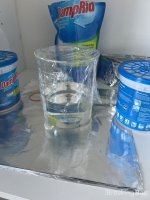- Joined
- Mar 15, 2022
- Messages
- 650
- Solutions
- 1
- Reaction score
- 677
- Points
- 93
- Deals
- 8
I think something wrong with graph.
If you use L+-tartaric acid(cheaper and easier to find)the D enantiomer(amph,Meth) will be in the solution not in the solid as there appears.
If you use D-tartaric acid(more expensive and difficult to find) the D enantiomer(amph,Meth) will be in the solid.
Thanks.
If you use L+-tartaric acid(cheaper and easier to find)the D enantiomer(amph,Meth) will be in the solution not in the solid as there appears.
If you use D-tartaric acid(more expensive and difficult to find) the D enantiomer(amph,Meth) will be in the solid.
Thanks.
G.Patton
Expert
- Joined
- Jul 5, 2021
- Messages
- 2,991
- Solutions
- 3
- Reaction score
- 3,379
- Points
- 113
- Deals
- 1
His scheme is correct. Salt is precipitated into the solid state. No difference, d-amphetamine l-tartaric acid salt or l-amphetamine d-tartaric salt. You can change acid and get difference isomer in the solid state with following procedures.
P.S. same for methamphetamine.
P.S. same for methamphetamine.
↑View previous replies…
- Language
- 🇬🇧
- Joined
- Dec 27, 2021
- Messages
- 183
- Reaction score
- 110
- Points
- 28
- By diogenes
G.Patton is correct. He basically uses the same method at the end of his procedure, which is used in this topic, he precipitates the D-Amphetamine with excess d-tartaric (aka L-(+)-tartaric acid or the natural form) in the end. This way it forms D-Amphetamine-d-bitartrate aka D-Amphetamine-L-(+)-bitartrate salt. The same principle is used, except he first gets rid of most of the L-Amphetamine isomer by half-molar tartaric acid, which leads to the formation of Amphetamine tartrate. As it happens L-Amphetamine-d-tartrate is much less soluble in alcohols than D-Amphetamine-d- (or L-(+)-) tartrate.
I think the L-Amphetamine-d-bitartrate is not even a stable molecule and it gets oxidized by the excess tartaric acid, this is why the solution gets red. So Patton`s procedure is more elegant (but more labour intensive) and is capable of separating the L-amphetamine which in this topic`s method simply gets destroyed.
I think the L-Amphetamine-d-bitartrate is not even a stable molecule and it gets oxidized by the excess tartaric acid, this is why the solution gets red. So Patton`s procedure is more elegant (but more labour intensive) and is capable of separating the L-amphetamine which in this topic`s method simply gets destroyed.
- Language
- 🇺🇸
- Joined
- Jun 17, 2022
- Messages
- 105
- Reaction score
- 27
- Points
- 28
Hello, does methamphetamine synthesized from the method of ephedrine and pseudoephedrine give the d-methamphetamine isomer with 99% purity? If not, how much?


